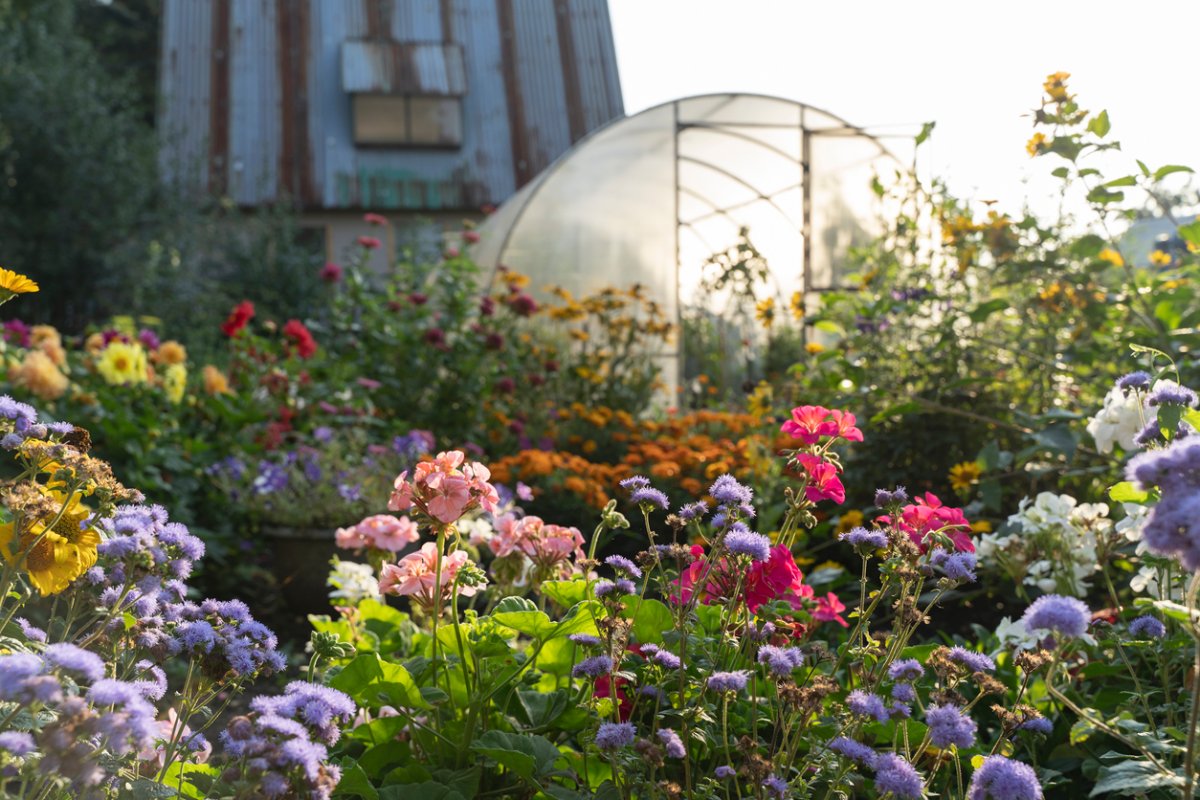We may earn revenue from the products available on this page and participate in affiliate programs. Learn More ›
Forget the same old, same old. No matter what type of garden you have—vegetable, ornamental or a mix of both—there are some exciting gardening trends on the horizon for 2024.
Whether you’re looking to change up the look of your home’s landscaping with a cottage/meadow look, adding a rain garden, or just practicing better gardening techniques to help the planet, there are plenty of garden trends for 2024 to get behind. Here are some of those trends, along with ways to incorporate them into your home garden.
1. The Cottage/Meadow Look

The cottage/meadow look is growing in popularity due to its low maintenance and environmentally friendly persona. However, it does take some work.
“Cottage landscapes and meadows are based on the premise of natural systems, including native plant material, basic soils, and minimal management,” says Mike Teal, PLA, regional director of operations–grounds for Texas A&M University. “However, design and planning are still very important when executing this concept, because you don’t simply want to throw some seed into your yard and hope for the best.”
Teal explained the area needs to be properly prepared by removing noxious and invasive plant species, and doing basic soil preparation, such as tilling/aeration, minimal amendments (compost) and grading for positive drainage. The location of a meadow will also need at least six hours of full sun a day, and a water source will be needed, at least until plants are established.
You’ll want to go with native plants that can adapt and survive pretty much on their own, adding native grasses for texture. Once plants are established, minimal management and upkeep will be required, but these looks will never be completely free of necessary oversight as you’ll need to battle undesirable weeds.
RELATED: 17 Types of Wildflowers Every Home Gardener Should Know
2. Edimental Plants

The experts at Garden Design predict edimentals—plants that are both edible and ornamental—are a great option for the upcoming gardening year since they serve more than one function in the garden. Plus, they are an easy way to add color and texture among your favorite plants. A bonus: many edimentals live for more than one year and they tend to be easier to care for than many annual vegetables. Examples include asparagus, elderberries, rainbow chard and nasturtiums.
RELATED: 11 Types of Edible Berry Bushes You Should Plant This Spring
3. Vertical Gardens
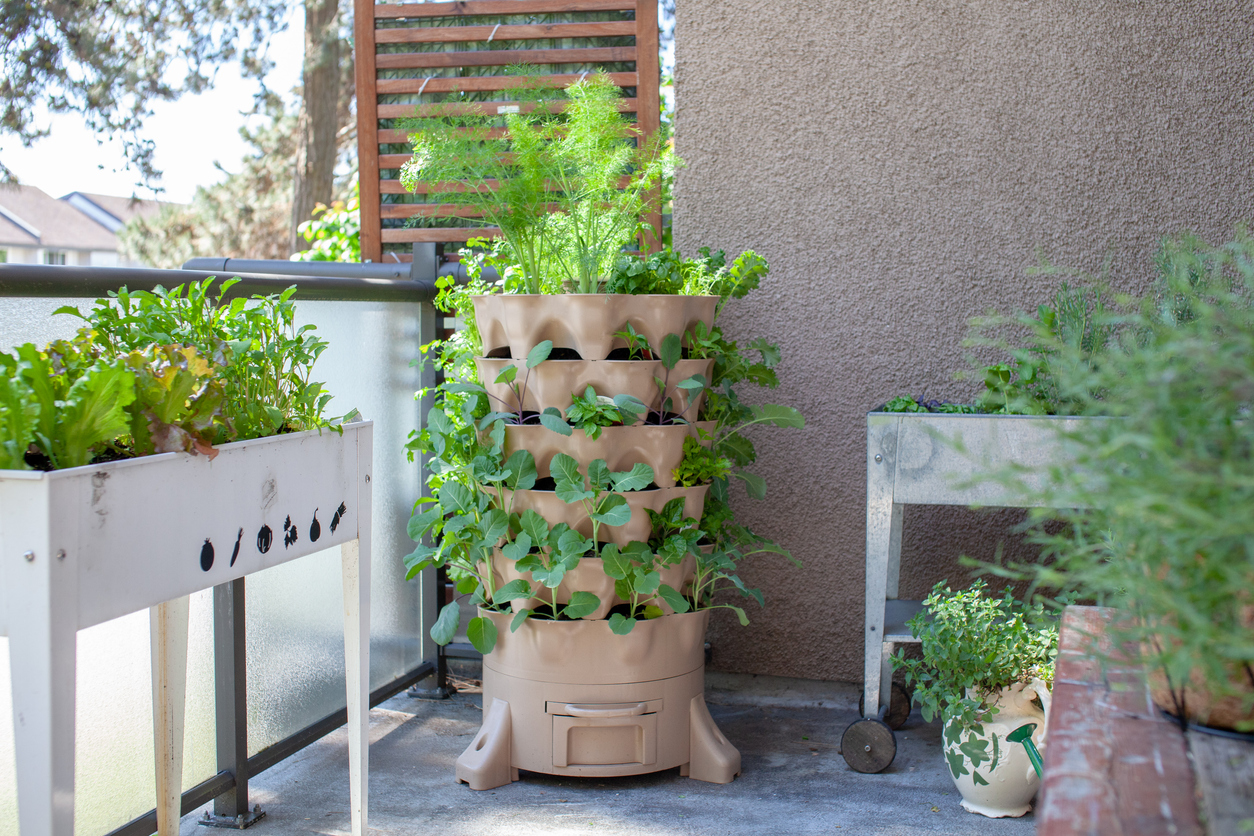
Vertical gardens are growing in popularity, and are great for those who are short on horizontal footprint or like the creative and aesthetic appeal that comes with upright gardening. Depending on the type of vertical garden you put together, you may even be able to put it on wheels, so you can move it around the landscape to catch maximum sun or to avoid a frost, according to George Bernardon, vice president of grounds management at SSC Services for Education, a support-services provider for educational facilities.
He says he and his wife “planted during mid-April in Central Georgia, so with the possibility of frost and extremely cold nights, we rolled the mobile garden into our garage at night and moved back outside after 8 a.m. each day. The plants grew like the Jolly Green Giant,” he says
RELATED: 21 Vertical Garden Ideas for Those Short on Space
4. Goth Gardens
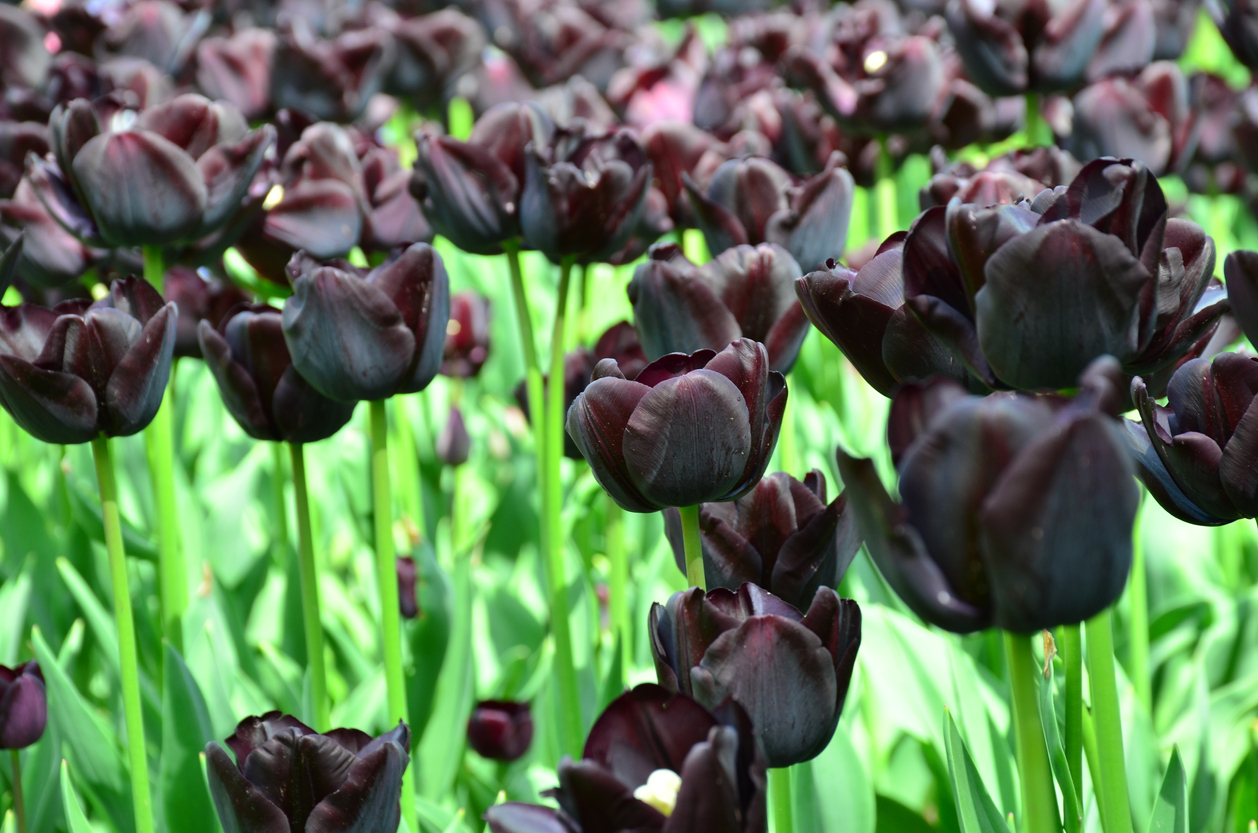
Steampunk fans, rejoice! A dark, Victorian vibe has finally made its way from Wednesday Addams’ greenhouse classroom at Nevermore all the way to suburbia. To try this trend, opt for darker hues. Anything with a name that starts with black or purple is likely a good candidate; think black tulips or Black Cherry Floribunda Roses. Common ornamentals you’ll see at your local nursery include purple heart plants and purple shamrock. If something a little spooky is your style, try mimicking cradle graves, tombstones with a rectangular extension in the front that acts as a planter. Add uplighting to trees and refrain from too much trimming to keep the place looking a little unruly.
RELATED: Sci-Fi in the Garden: How to Transform Your Garden to Reflect the “Hortifuturism” Trend
5. Rain Gardens
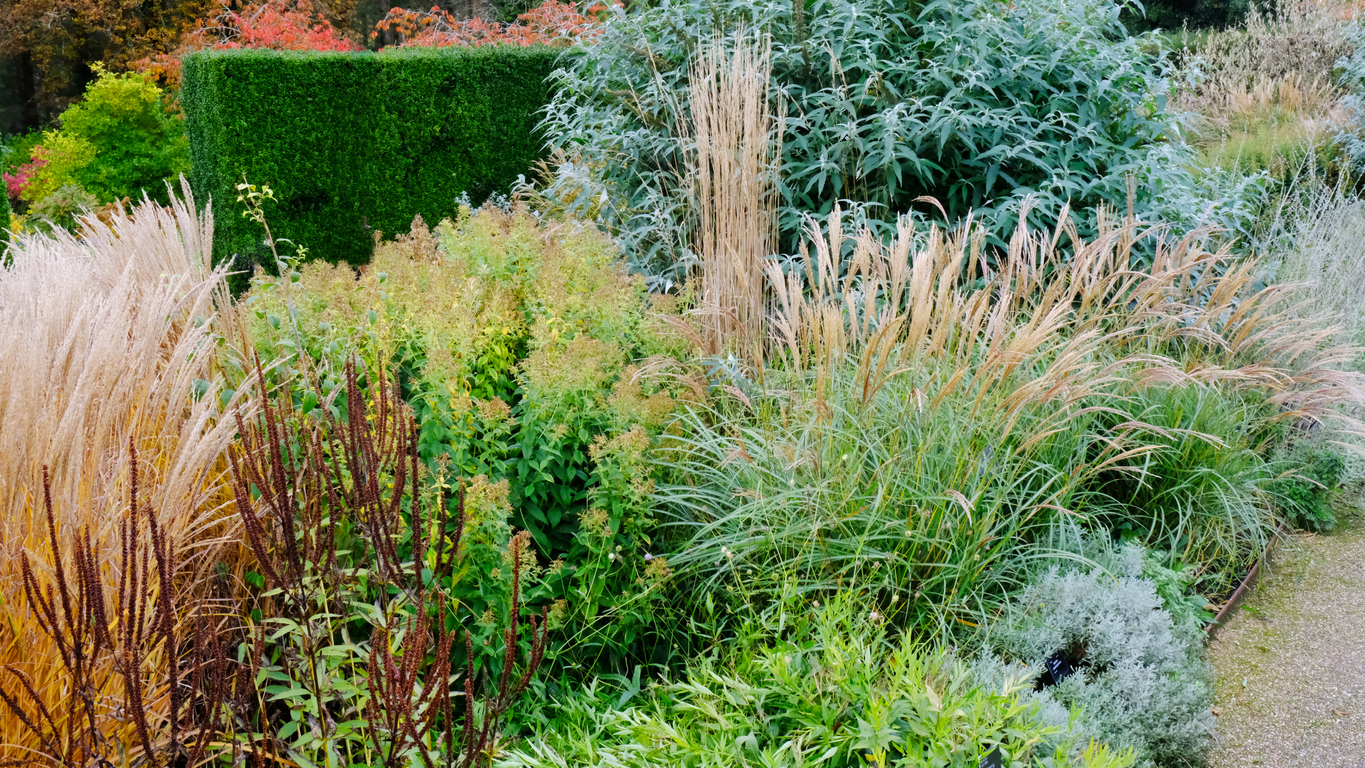
Since much of the United States experienced moderate to exceptional drought conditions in 2023, it makes sense to incorporate a rain garden into your landscape design. Rain gardens help collect water during storms, redirecting the rainfall to a planted area, rather than letting the water flow uselessly into the street.
Start a rain garden by choosing plants that can handle extremes (both drought and rain), such as ornamental grasses, natives, and sedges. Plants that help reduce runoff are also helpful, and you can find options native to your area for best results.
RELATED: 20 Landscaping Mistakes That Make Home Buyers Walk the Other Way
6. Gravel Gardens
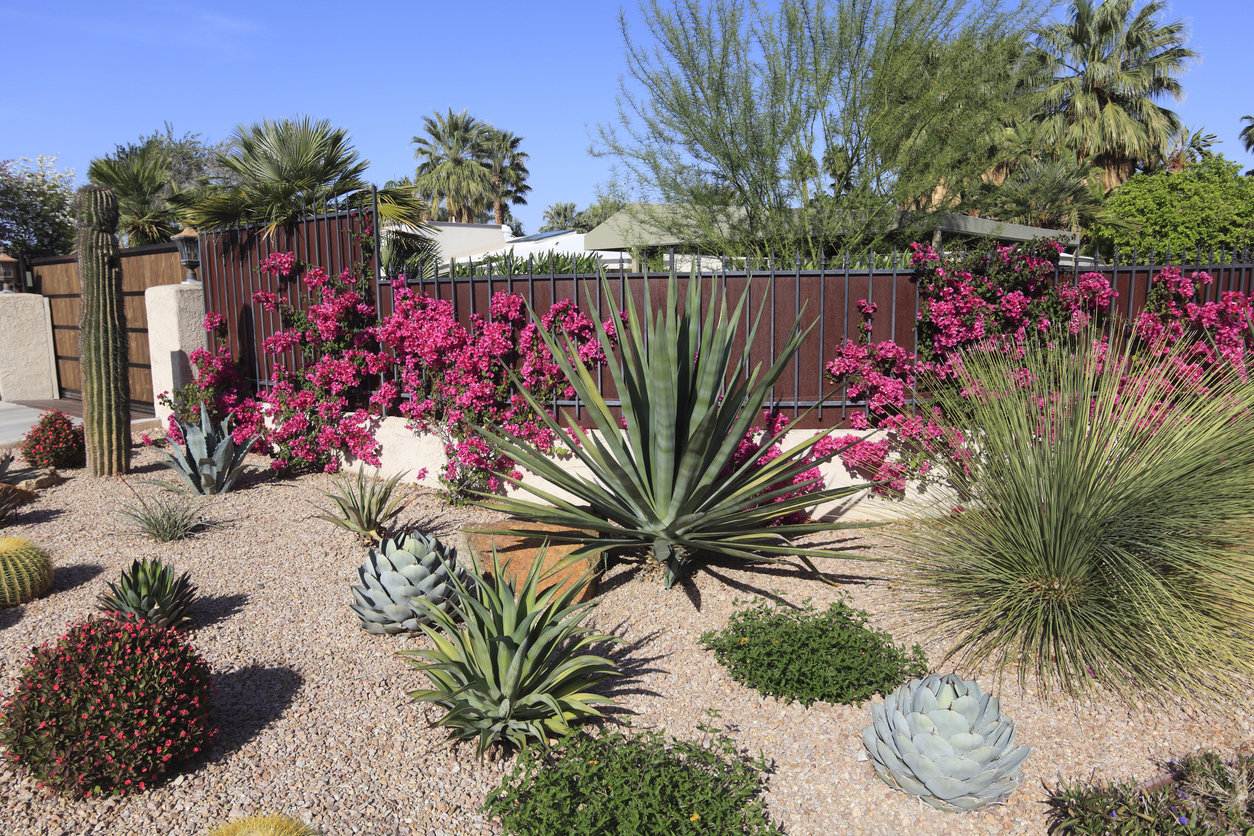
Want a low-maintenance garden that will get the attention of passersby? Try a gravel garden in 2024. Gravel gardens allow you to include plenty of color and texture into your landscaping, but with much less maintenance and water than traditional gardens. Gravel gardens are especially great for those who live in areas with severe drought conditions.
A gravel garden is a low-maintenance garden bed composed of small-diameter gravel usually held in place by some sort of edging, such as a commercial edging product, pavers, or large stones. Gravel is applied over existing ground to a depth of typically 4 to 6 inches. The root balls of small transplants are set down into and surrounded by the gravel. Drought-tolerant plants with deep root systems are best for this type of garden.
RELATED: 10 Types of Landscaping Rocks Every Homeowner Should Know
7. Plant For the Environment

At the 2023 Chelsea Flower Show in London, nearly every exhibit touched on concern for the environment. In 2024, you can do your part for the environment in your home garden by planting carbon-capturing plants.
Try native grasses, fast-growing native trees, and herbaceous perennials, such as echinacea, rudbeckia, and hardy geranium, or whichever plants are native to your area. Herbaceous perennials are a great option as they can live for many years, come in a variety of colors, and bloom at different times of the season so your garden will always be full of color.
RELATED: 50 Plants That Thrive in Any Yard
8. Plant For Pollinators
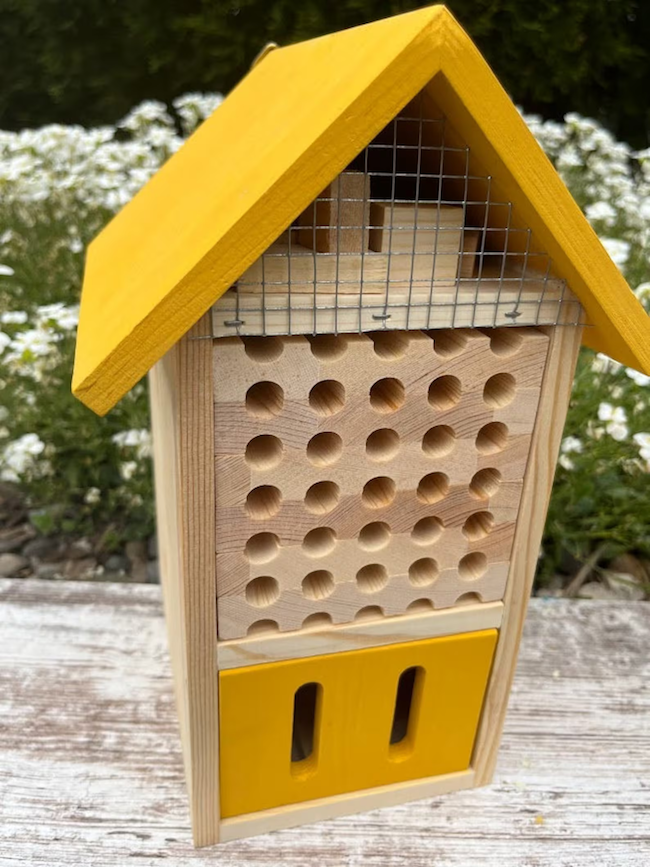
You don’t have to tell all the bugs in your garden to bug off! In 2024, learn to be one with the bugs—or at least the beneficial ones. Not only has the number of shoppers buying native plants almost doubled since 2019, but the 2023 National Gardening Survey reported a 10 percent increase year over year in gardeners planting for pollinators. Add some pollinator-friendly plants to your garden by adding native plants local fauna rely on. Try bee balm, which is a favorite of not only bees, but also butterflies and hummingbirds. Common, swamp, and butterfly milkweed, along with sedges and hyssop are also popular pollinator plants.
Check out some beneficial garden insects you should know about, and then add an insect house like this Grand Pollinator Hotel by GardenOutsideTheBox at Etsy for your favorite pollinators.

